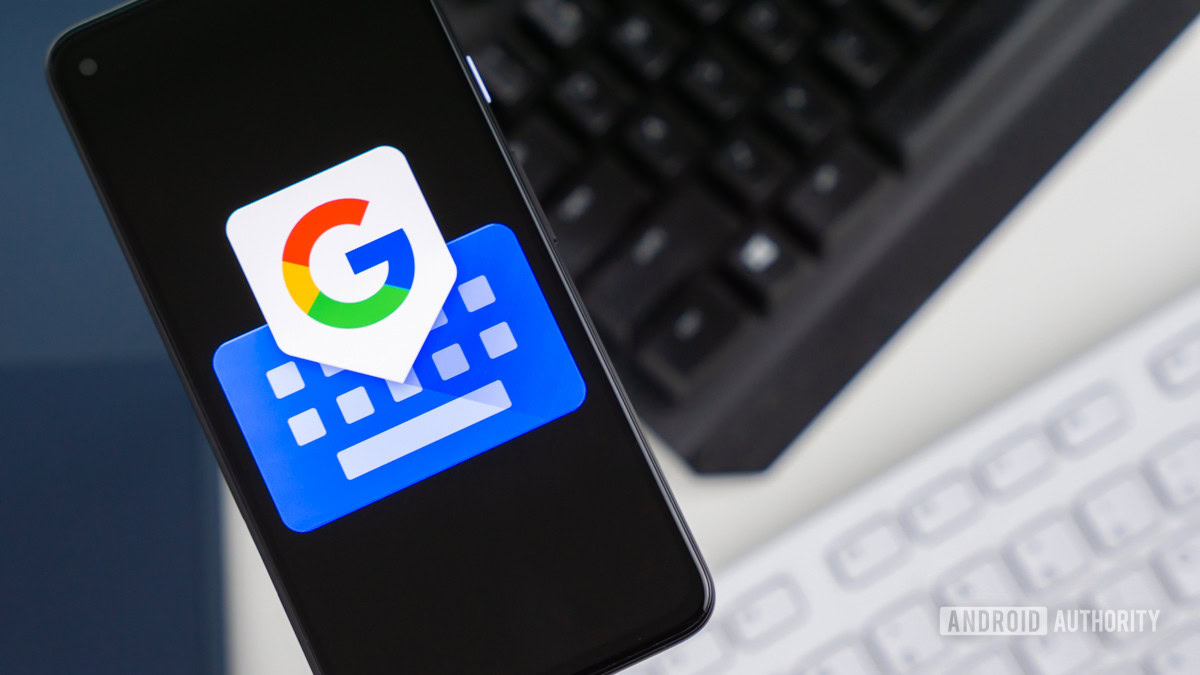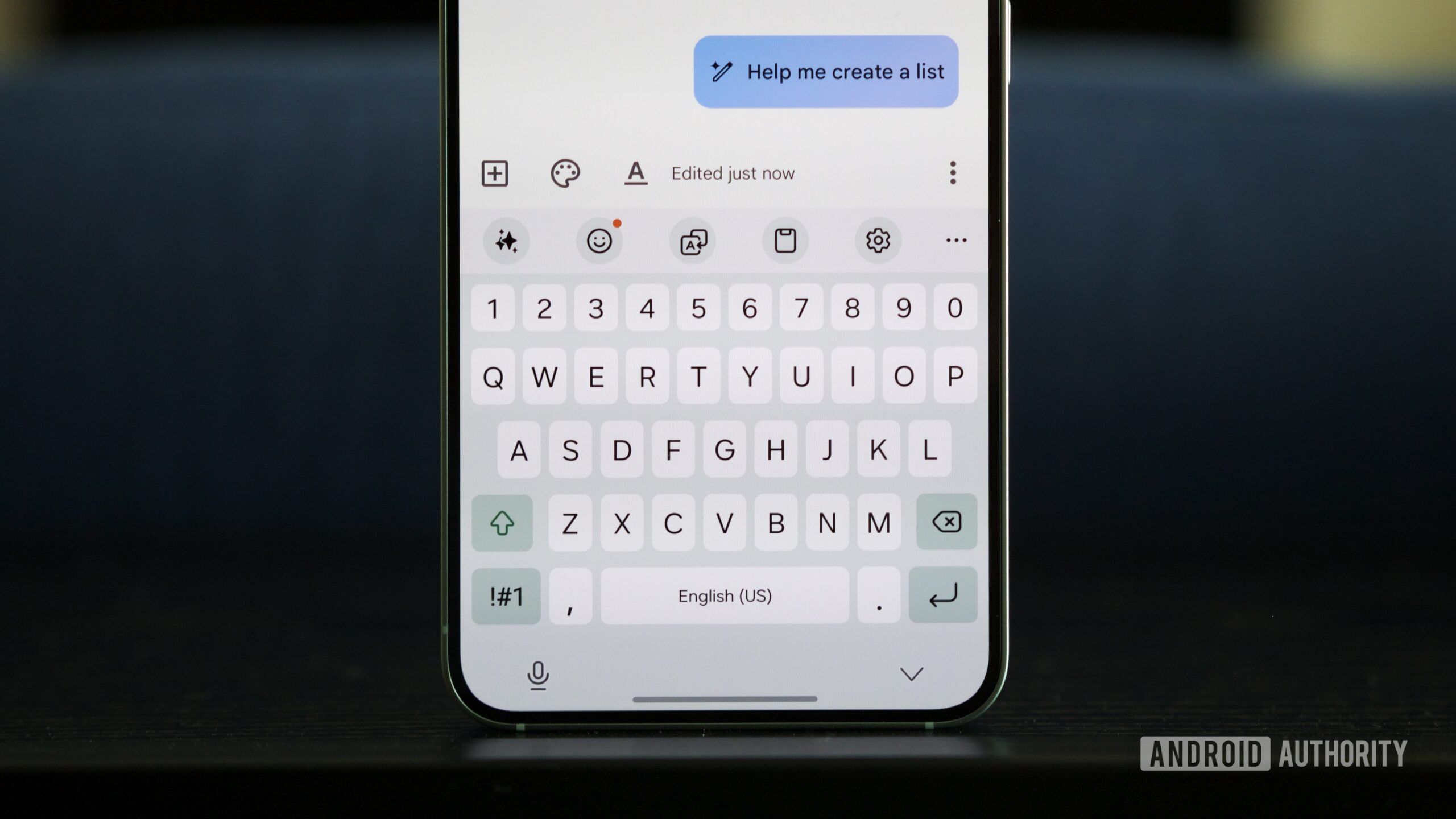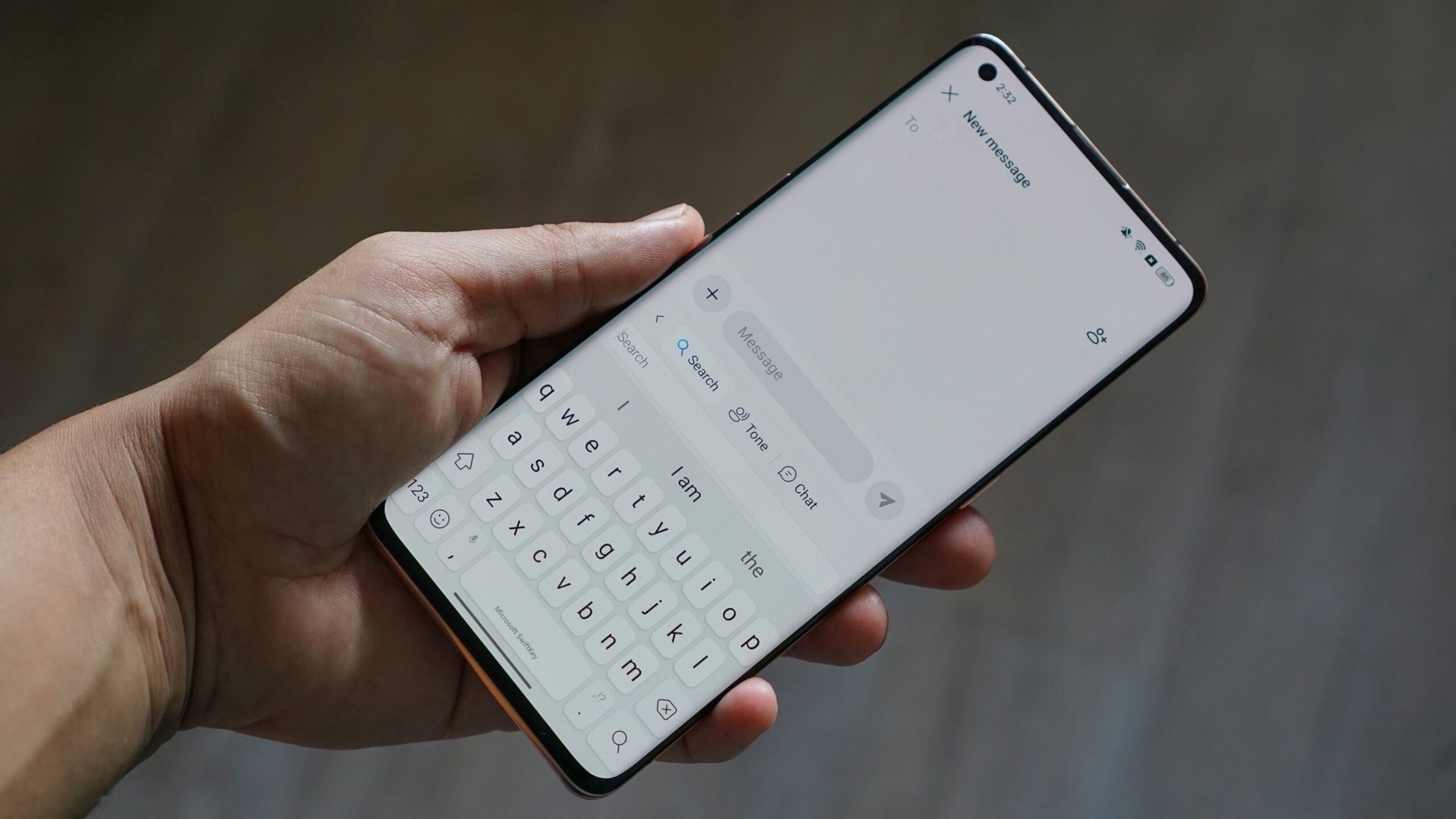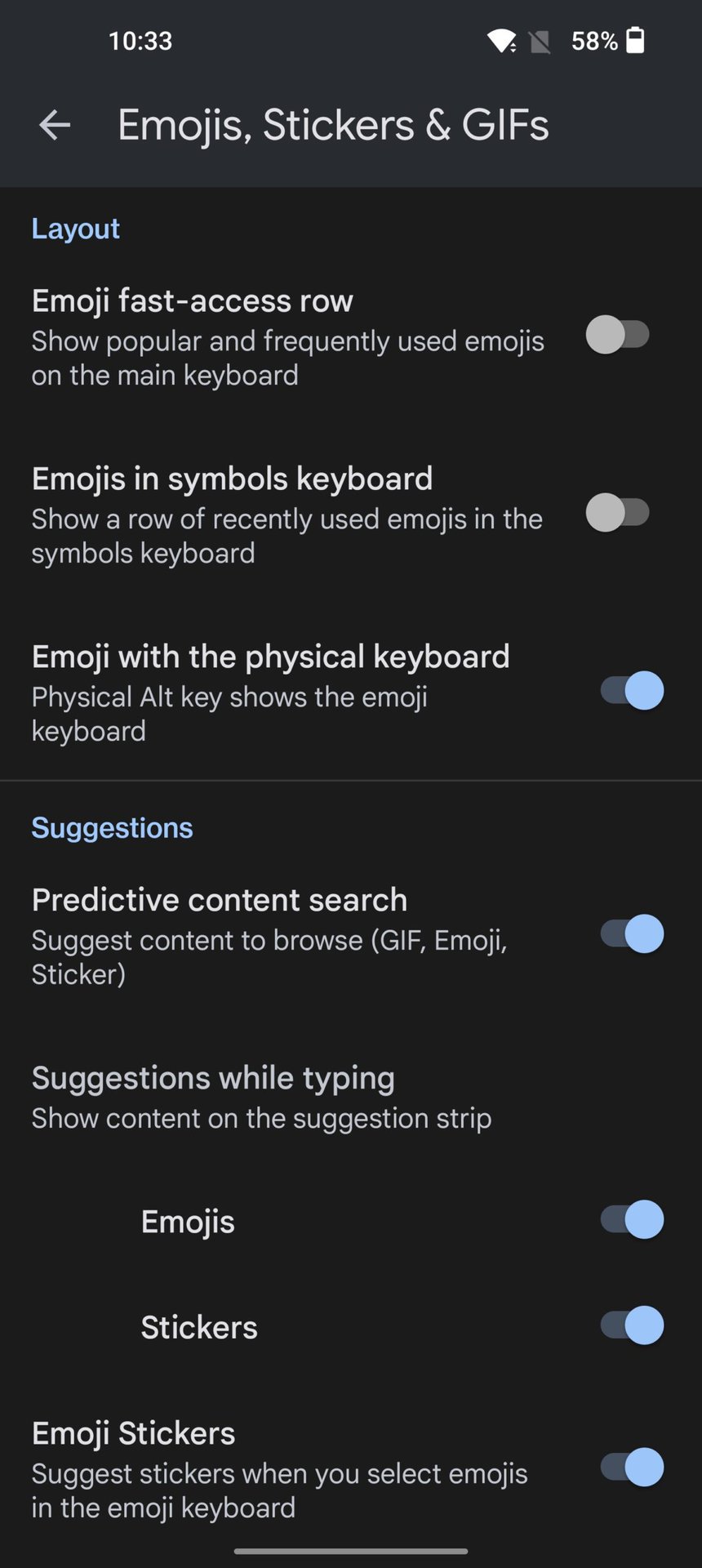Affiliate links on Android Authority may earn us a commission. Learn more.
How to change your default keyboard on Android
Published onMarch 18, 2025
Android keyboards have come a long way from being a simple typing tool. Both native and third-party options support several languages, different input methods, dedicated sections for emojis, GIFs, stickers, and sometimes even built-in translate functions. While native keyboards are powerful, you might want to mix things up depending on your needs. Here’s how to change your keyboard on Android.
QUICK ANSWER
To change your keyboard on Android, go to Settings > System > Keyboard > øn-screen keyboard and enable the keyboard. You can download third-party keyboards from the Google Play Store.
JUMP TO KEY SECTIONS
Editor’s note: These steps were assembled using a Google Pixel 8a running Android 16 and a Samsung Galaxy Z Flip 6 running Android 14. Some steps may differ depending on your device and the software version it runs.
What are your keyboard options on Android?
Native keyboards
The native keyboard on your Android might be different, depending on the phone you have. Let’s take a closer look at two of the standard native keyboards on Android.
Gboard

Google’s Gboard app is the stock keyboard on Pixels, OnePlus devices, and others. You can also download it from the Google Play Store on many phones.
Gboard is a well-rounded keyboard with plenty of input options. You can use voice typing, glide typing, and handwriting if simply tapping keys gets boring. You can quickly find and use stickers, Bitmoji, GIFs, and emojis on the keyboard. However, one of Gboard’s best features is direct access to Google Translate. Tap the translate button in the top bar, type in the language of your choice, and see the translated text appear.
Samsung keyboard

Samsung’s native keyboard is quite similar to Gboard. You can use voice input and enable swipe to type, and predictive text goes to the next level with sticker suggestions. The Samsung keyboard includes more stickers, GIFs, animated emojis, the ability to create custom emojis, and the option to download more with the tap of a button.
You can also set up Smart content on the keyboard. This includes Bitmoji stickers, Google Translate, Grammarly, and even the option to add links to Spotify music and YouTube videos directly. Newer devices even have AI support on the keyboard. It’s as feature-packed as any third-party Android keyboard, so you won’t have to change the native keyboard if you have a Samsung phone.
Third-party keyboards
Plenty of third-party keyboards are available on the Google Play Store, from the minimalistic to the feature-packed.
Microsoft Swiftkey

Swiftkey is a very popular third-party keyboard for Android. The keyboard is excellent for swipe typing. If you enable the required permissions, it’s one of the best options for predictive texting and lets you build a personal dictionary. You can use Swiftkey on multiple devices, and the app will learn from usage and typing patterns to continuously improve its text predictions.
Microsoft bought Swiftkey in 2016, so it’s no surprise that there are some additional integrations. You can create task lists on the keyboard if you sign in with a Microsoft account, and it comes with direct access to Microsoft Translate. Like other Android keyboards, you can use emojis, GIFs, and stickers. It even uses AI, and was actually among the first to implement AI in a deeper level. It also has various themes and customization options to make the keyboard experience your own.
How to change the default keyboard on any Android phone
Using the links above, you can download third-party keyboards like Microsoft Swiftkey or Gboard. Follow the steps below to change the default keyboard on your phone.
How to change the default keyboard on Android:
- Launch the Settings app.
- Go into System.
- Tap on Keyboard.
- Select On-screen keyboard.
- Toggle on the keyboard you want to use.
Remember that the steps will be a little different depending on your phone. Let’s go over the Samsung steps together, as it is the most popular Android manufacturer besides Google.
How to change the default keyboard on Samsung Android devices:
- Launch the Settings app.
- Go into General management.
- Tap on Keyboard list and default.
- Make sure the keyboard you want to use is enabled.
- Select Default keyboard.
- Pick your favorite keyboard!
You don’t have to go into the settings to change your keyboard, by the way. You can also change the keyboard while typing.
How to change the keyboard without using the settings:
- Start typing, using any app.
- When the keyboard shows up, you will see a globe icon in the lower-right corner. Tap and hold on to it.
- In some devices, such as Samsung ones, this will show up as a keyboard icon.
- Pick your favorite keyboard!
How to customize an Android keyboard
There are a lot of native and third-party keyboards on Android that offer a variety of customization options. Here, we’ll look at how to customize Gboard, the keyboard that is available natively on a lot of Android phones.
How to access the Gboard settings:
- Launch the Settings app.
- Go into System.
- Tap on Keyboard.
- Hit On-screen keyboard.
- Tap on Gboard (not the toggle).
Languages
Gboard supports a wide range of languages, including multiple scripts and regional and national dialects. Go to Languages > Add keyboard in the Gboard settings menu to change your Android keyboard to the correct language. If the language uses a different script, tap on its name in the Languages section to choose between a keyboard in that script or an English keyboard that automatically changes what you type to the correct script. Remember that this isn’t a translation feature, though.
You can change the layout to what suits you best, including QWERTY (the default), QWERTZ, AZERTY, and more. If you prefer handwriting, Gboard includes a handwriting keyboard with 97 languages. You will see the Handwriting option in the layout section if your language is supported.
Preferences
Preferences include adding or removing a number row, including a dedicated emoji key, or adding a language switch key (if you have multiple languages set up). You can also set up a one-handed mode and make changes to the height of your Android keyboard. You can also use this section to set the sound and haptic feedback with a key press.
Themes
Gboard themes include setting it to a dark or light theme or choosing between multiple colors, landscape photos, light gradients, and dark gradients. You can also download third-party Gboard themes and add them by tapping the + icon under My themes.
Text correction
This section is all about making your typing experience easier. You can enable next-word suggestions, Smart Compose, auto-correction, auto-capitalization, spell checks, grammar checks, and block offensive words. You can also add or remove the suggestion strip on the keyboard.
Emoji, stickers, and GIFs

These settings let you add an emoji fast-access row and a recently-used emojis row to your keyboard. You can also set up a button for the emoji keyboard and enable predictive searches for GIFs, emojis, and stickers.
Other settings
Gboard also lets you enable and disable Glide typing and Voice typing. There’s a built-in Clipboard that will allow you to access copied text quickly. Finally, you can also set up a Personal dictionary, so auto-correct doesn’t keep changing what you’re trying to say.
How to turn predictive text on and off on an Android device
With different keyboards available, the setting to turn predictive text on and off depends on the keyboard you use. We’ll look at enabling or disabling this feature on Gboard, Samsung Keyboard, Microsoft Swiftkey, and Grammarly Keyboard.
Gboard
Open Gboard settings and go to Text correction. Toggle Next-word suggestions on or off to enable or disable predictive text. You can turn off the Show suggestion strip option if you want to remove all suggestions.
Samsung Keyboard
On your Samsung phone, enable or disable predictive text on the keyboard by going to Settings > General management > Samsung Keyboard. Here, you can tap on Predictive text and then toggle the feature on.
Microsoft Swiftkey
Predictive text is an integral part of the Swiftkey experience. Unfortunately, you can’t disable the prediction bar at the top of the keyboard. Open the Swiftkey settings (Settings > System settings > Keyboard and input method and tap Swiftkey in the Available keyboard section or by launching the Swiftkey app).
Go to Typing and disable the Quick prediction insert option so that the predictions don’t get in the way. You can also disable auto-correct to remove all suggestions.